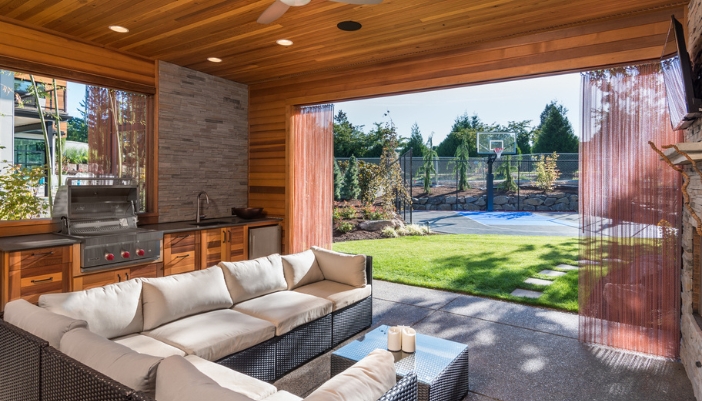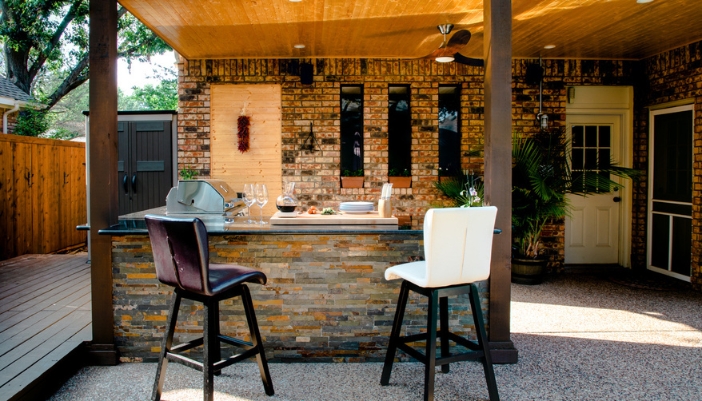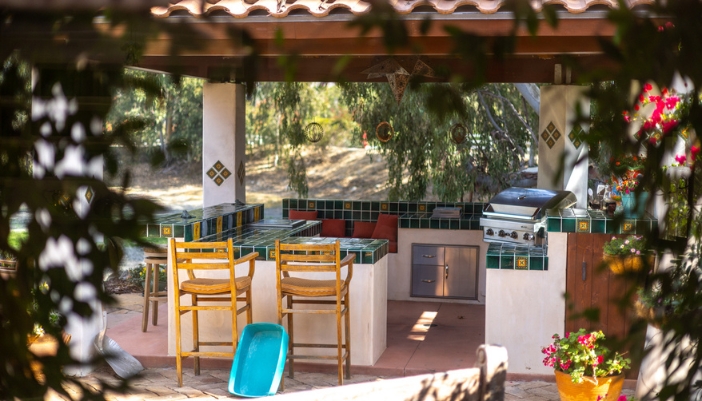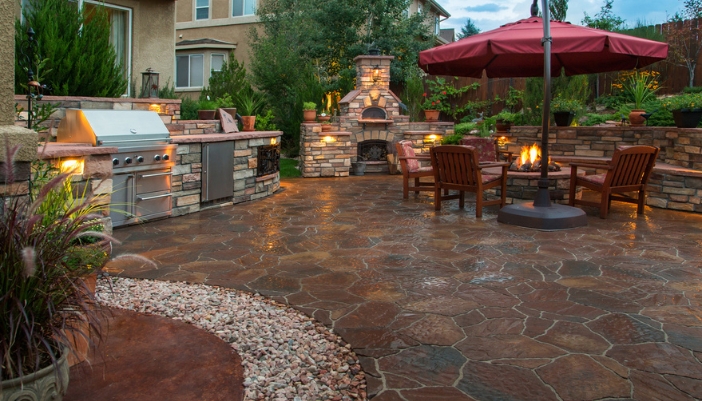We've all seen it: someone sets up their outdoor space with a shiny new grill and comfy patio chairs and then wheels out a spare fridge from the garage. It seems like a great idea—until the fridge can't keep up with the heat, struggles through the winter, or just quits altogether. Outdoor refrigeration might feel simple, but it takes a little planning to get it right.
That's where our experts at Dick Cooper TV & Appliance can help. We know what works outside—and what won't last past the first season.

DO Choose an Outdoor-Rated Refrigerator
A refrigerator that works great inside your kitchen isn't automatically ready for life outdoors. When dealing with changing seasons, humidity, and unpredictable weather, you need a fridge built specifically to handle those conditions.
Here's what sets outdoor-rated refrigerators apart:
- UL Outdoor Rating: Tested and certified to safely handle outdoor conditions.
- Weather-Resistant Materials: Sealed components, rust-resistant exteriors, and sturdy construction.
- Superior Insulation: Keeps food cold even during extreme temperature swings.
- Enhanced Seals: Keeps moisture out and prevents condensation from damaging the interior.
- Designed for Ventilation: Built to work efficiently even in less controlled environments.
DON'T Use an Indoor Fridge Outside
Grabbing an extra fridge from the basement and plugging it in outside might sound easy, but it's a shortcut that rarely works out. Indoor refrigerators aren't built for the ups and downs of outdoor weather, and forcing them to keep up can lead to expensive repairs or spoiled food.
- Limited Temperature Range: Designed for stable indoor climates, they struggle with heat, cold, and humidity.
- Weak Seals and Insulation: Moisture sneaks in, leading to frost buildup, leaks, and unsafe food storage.
- Compressor Strain: Constantly adjusting to outdoor temperatures wears down critical components.
- Electrical Risks: Exposure to moisture can cause shorts, shocks, or even fires.
- Warranty Issues: Most manufacturers won't cover damage caused by outdoor use.
Pro Tip:
If you're tempted to "make it work" with an indoor model, remember that repairs and replacements will likely cost more than buying the right fridge.

DO Plan for Placement
Where you put your outdoor fridge can make a huge difference in how well it works — and how long it lasts. Even with an outdoor-rated model, smart placement helps protect your investment and keeps everything running smoothly.
- Pick a Shaded Spot: Direct sun forces the fridge to work harder, especially in summer. Shade keeps internal temps more stable.
- Provide Shelter: A covered patio or outdoor kitchen structure offers protection from rain, snow, and debris.
- Avoid Heat Sources: Keep the fridge away from grills, fire pits, or anything that gives off heat.
- Allow for Ventilation: Leave enough space around the unit for proper airflow, especially for freestanding models.
- Stable, Level Surface: A flat surface helps the fridge operate correctly and prevents door alignment issues.
DON'T Ignore Electrical Needs
An outdoor fridge needs more than just a nearby outlet. Outdoor electrical setups have extra safety requirements to handle moisture, weather, and unpredictable conditions.
- No Indoor Outlets: Outdoor fridges should only plug into outlets specifically rated for outdoor use.
- No Extension Cords: These can overheat, create tripping hazards, and aren't designed for long-term outdoor use.
- No Improper Wiring: DIY shortcuts can lead to fire risks, shocks, or damaged appliances.
- Skipping GFCI Protection: Ground Fault Circuit Interrupter outlets shut off power if moisture or electrical faults are detected.
- Overloading Circuits: Outdoor kitchens often have multiple appliances — make sure your circuit can handle the load safely.
Pro Tip:
If you're unsure about your setup, have a licensed electrician check or install the proper wiring. This simple step can prevent major headaches later.

DO Check the Compressor Specs
The compressor is the heart of your refrigerator — and outdoor conditions really put it to the test. Choosing the right compressor helps your fridge handle extreme temperatures without constantly breaking down or wasting energy.
- Wide Temperature Range: Look for compressors rated to operate in both hot summers and cold winters.
- High-Efficiency Performance: Energy-efficient models adapt better to fluctuating conditions, reducing wear and tear.
- Dual or Variable-Speed Options: These can adjust cooling power based on the surrounding temperature, which helps maintain consistent internal temps.
- Noise Levels: Some compressors run louder outdoors — consider quieter models if your fridge is near seating or entertaining areas.
- Built-In Protection: Features like overload protection can help prevent damage during power surges or extreme conditions.
Pro Tip:
Check the manufacturer's recommended operating temperatures before you buy. Not every outdoor fridge is built for all climates.
DON'T Forget Year-Round Maintenance
Even the best outdoor refrigerators need a little attention to keep running smoothly. Skipping maintenance can shorten its lifespan and lead to costly repairs down the road.
- Ignoring the Coils: Dust, dirt, and leaves can clog condenser coils, forcing the fridge to work harder and less efficiently.
- Skipping Seal Checks: Worn or dirty door seals let warm air and moisture inside, leading to frost buildup and spoiled food.
- Leaving It Fully Stocked in Winter: In freezing temps, some outdoor fridges may need to be emptied and unplugged to prevent damage.
- Neglecting Drainage: Standing water from rain or snowmelt can cause rust or damage electrical components.
- Forgetting Seasonal Inspections: A quick check before each season starts helps catch minor issues before they become bigger problems.

DO Secure It Against Weather and Pests
Your outdoor fridge is vulnerable to more than temperature swings. Wind, rain, and curious critters can also cause unexpected problems if you don't take a few simple precautions.
- Use Weatherproof Covers: A durable cover can protect against rain, snow, and debris when the fridge isn't in use.
- Seal Gaps and Openings: Small openings can invite insects, rodents, or birds looking for shelter or snacks.
- Check Drainage Around the Area: Standing water near the fridge can lead to rust, electrical issues, or foundation damage.
- Anchor Freestanding Units: Strong winds or accidental bumps can shift lighter fridges; secure them to prevent tipping or damage.
- Protect Electrical Connections: Use weather-rated covers for outlets and cords to guard against moisture and corrosion.
Keep Your Cool (The Right Way)
Outdoor fridges can be a game-changer for backyard entertaining—but only if you set yourself up for success! If you've got questions or need some guidance, our experts at Dick Cooper TV & Appliance are here to help. Stop by anytime to chat with us and check out our selection of refrigeration options.